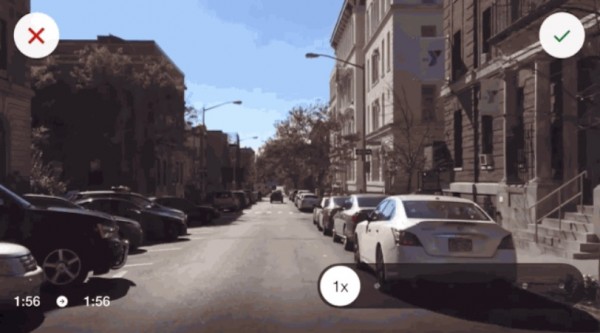Software vs Hardware stabilization (what about a bit of both?) #Hyperlapse
 The first time I saw software stabilisation in action was quite a few years ago. I believe it was a clip by James Burland and it showed a before and after file, frame by frame a jittery image was composed into something significantly more (giving that feeling that the viewfinder was the one moving, whilst the scene was stable). Nokia phones had digital stabilisation for a long while in videos but I don’t really think they did much (back in the old Symbian days). It wasn’t really until the Nokia Lumia 920 that people started paying attention to stabilising hand held video on phones. The results, especially on panning or holding something still, was incredible. Super smooth!
The first time I saw software stabilisation in action was quite a few years ago. I believe it was a clip by James Burland and it showed a before and after file, frame by frame a jittery image was composed into something significantly more (giving that feeling that the viewfinder was the one moving, whilst the scene was stable). Nokia phones had digital stabilisation for a long while in videos but I don’t really think they did much (back in the old Symbian days). It wasn’t really until the Nokia Lumia 920 that people started paying attention to stabilising hand held video on phones. The results, especially on panning or holding something still, was incredible. Super smooth!
But something more intensive like running or jumping was a step too far.
Now, even more dedicated, more professional gear often ends up on either a rig, or a jig, or some stabilisation contraption despite the onboard OIS. It just makes the clip shot look really professional. I’ve used one since getting my N8 and then the 808 and occasionally on my lumias for certain shots as it looks so darn good having these smooth shots when I’m running or climbing up and down stairs, pivoting in circles etc. However, those contraptions are bulky and I don’t always have them with me.
This results in mostly handheld use. The OIS definitely helps a lot but I always found that the same clip placed into YouTube (with the stabilisation option) 8 out of 10 times smoothed things out so much (2 out of 10 times it looked weird). TheVerge have highlighted an app (for OIS) that stabilises video by recording shots in 1080p but outputting only 720p and using the space around the 720p as a buffer to move the frame up/down – left/right (I thought that’s what iPhone has been doing anyway, hence why the field of view is narrower and more boxed in?).
Introducing Hyperlapse from Instagram from Instagram on Vimeo.
The result with Hyperlapse (another name for a technique of stop motion time lapse with movement of the camera) at times is very impressive. At lower lighting, it does become susceptible to a strange blurring. There are also some strange effects such as hyperlapse choosing to stabilise ‘earth’ as opposed to the vehicle you’re in resulting in the taxi shaking in the inside (04:30 in video below).But for a phone able to do it relatively quickly on the fly, that’s worthwhile to have.
The best quality for now still resides in an added stabilising accessory (possibly add some Warp post production stabilisation), but if you don’t have money, space, (or time to learn how to use one as some need getting used to) or the memory to remember to always bring that with you, then perhaps solid OIS with these digital stabilisation elements could be the best spontaneous portable solution? I’m not sure if OIS could interfere with the gyroscope data needed by hyper lapse as the camera sensor is already attempting to compensate for shakes.
Category: Nokia





Connect
Connect with us on the following social media platforms.